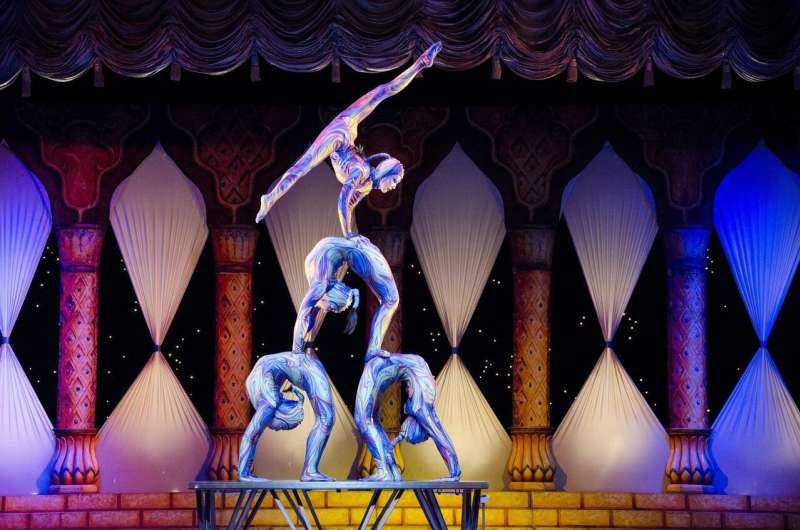This article has been reviewed according to Science X's editorial process and policies. Editors have highlighted the following attributes while ensuring the content's credibility:
fact-checked
peer-reviewed publication
trusted source
proofread
From sword swallowers to acrobats, contortionists, and clowns: New research to help prevent injury in circus artists

The popularity of circus arts is increasing around the world, however knowledge about injuries and illness in performers is lacking.
Circus arts take many forms, including professional companies, freelance performance, schools, recreational training centers, social circus and physical education.
In 2020 the International Olympic Committee (IOC) Consensus Group proposed a standard guideline for recording and reporting injuries and illnesses in sport and recommended that individual sports develop sports-specific extension statements.
An international group of circus arts researchers, including sports scientist and performing arts researcher Dr. Joanna Nicholas from The Western Australian Academy of Performing Arts (WAAPA) at Edith Cowan University (ECU), formed a working group to develop a circus arts-specific extension to be used with the IOC guideline.
The Circus arts extension statement provides the first standardized framework for researchers and healthcare practitioners to design studies and maintain records of care provided to circus artists.
Bold creativity and a wide variety of disciplines poses unique injury risk
Dr. Nicholas said circus artists have similar skills and physical demands to gymnasts and often require high levels of strength, balance, flexibility, agility and motor coordination.
"However, circus arts have a unique element of risk not often present in other sports and performing arts," she said.
"One of the central competencies is creativity, which involves challenging the physicality of performance from an artistic perspective to imagine, create and perform new tricks to construct an engaging, and often unique, artistic outcome."
Dr. Nicholas explained that circus arts encompass several areas and artists often train in multiple disciplines.
"Disciplines range from aerial acrobatics (e.g., trapeze), ground acrobatics (e.g., hand balancing), manipulation (e.g., juggling), character (e.g., clowning) and music, which all have different physical requirements that carry specific risks of injuries," she said.
Comparing apples with apples
Dr. Nicholas said differences in methodology and injury definitions in the existing research made it difficult for circus researchers to compare or compile findings between studies.
"It's like combining or comparing apples with pears," she said.
Dr. Nicholas said the new guidelines will improve the ability to compare injury patterns across different studies and allow for data sets across circus studies to be combined.
"Circus researchers will now be able to combine or compare apples with apples," she said.
The research team included Samuel Merritt University, Artletic Science, National Institute of Circus Arts, Swinburne University of Technology, Absolute Physiotherapy, Edith Cowan University, Codarts Rotterdam University of the Arts, Performing Artist Athlete Research Lab, Erasmus MC University Medical Centre Rotterdam, Rotterdam Arts and Sciences Lab, Centre de recherche, d'innovation et de transfert en arts du cirque, École nationale de cirque.
The paper "Circus-specific extension of the International Olympic Committee 2020 consensus statement: methods for recording and reporting of epidemiological data on injury and illness in sport" was published in BMJ Open Sport & Exercise Medicine.
More information: Stephanie Greenspan et al, Circus-specific extension of the International Olympic Committee 2020 consensus statement: methods for recording and reporting of epidemiological data on injury and illness in sport, BMJ Open Sport & Exercise Medicine (2022). DOI: 10.1136/bmjsem-2022-001394


















